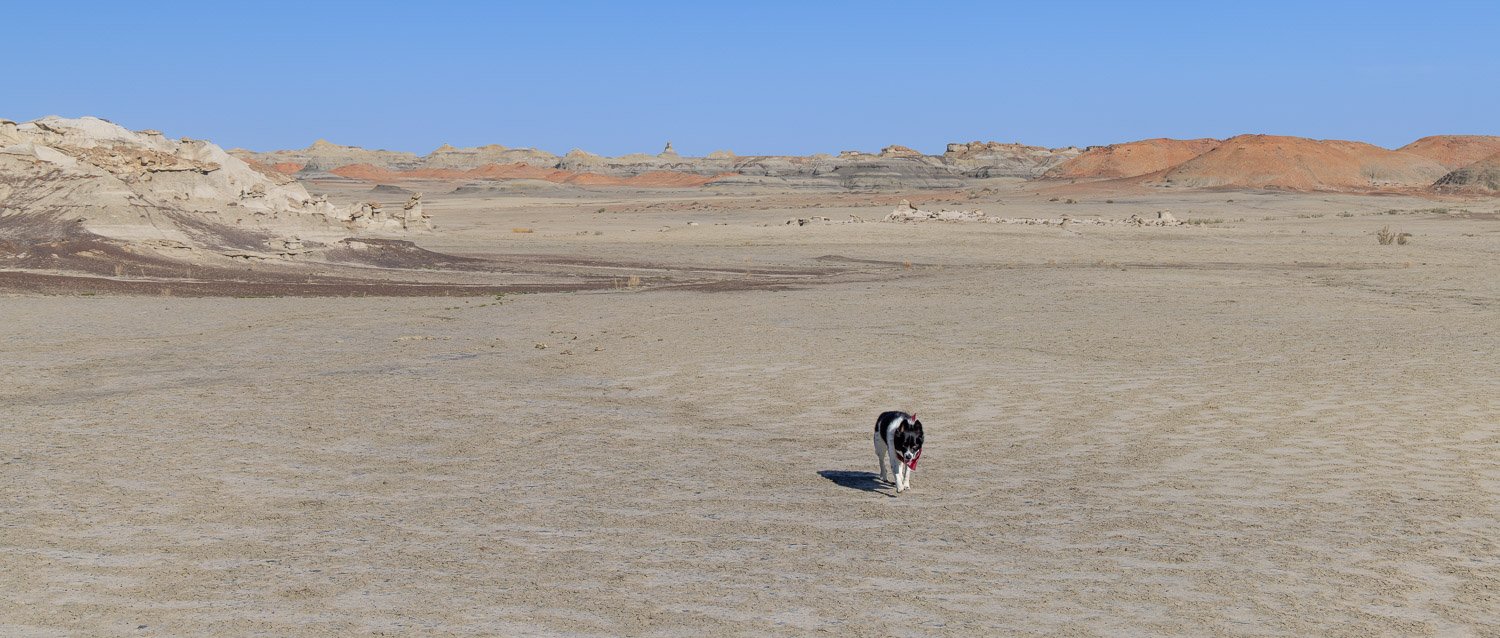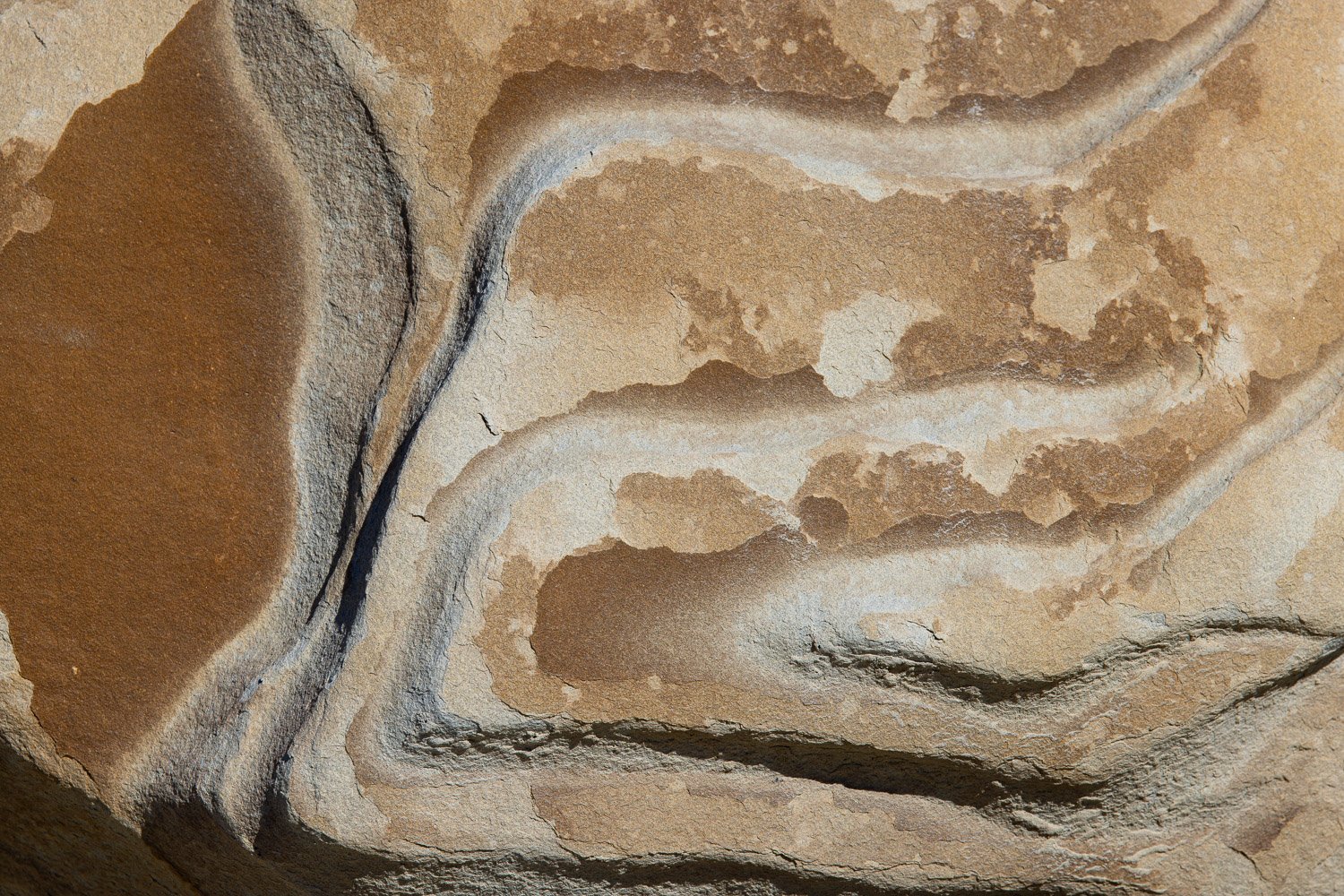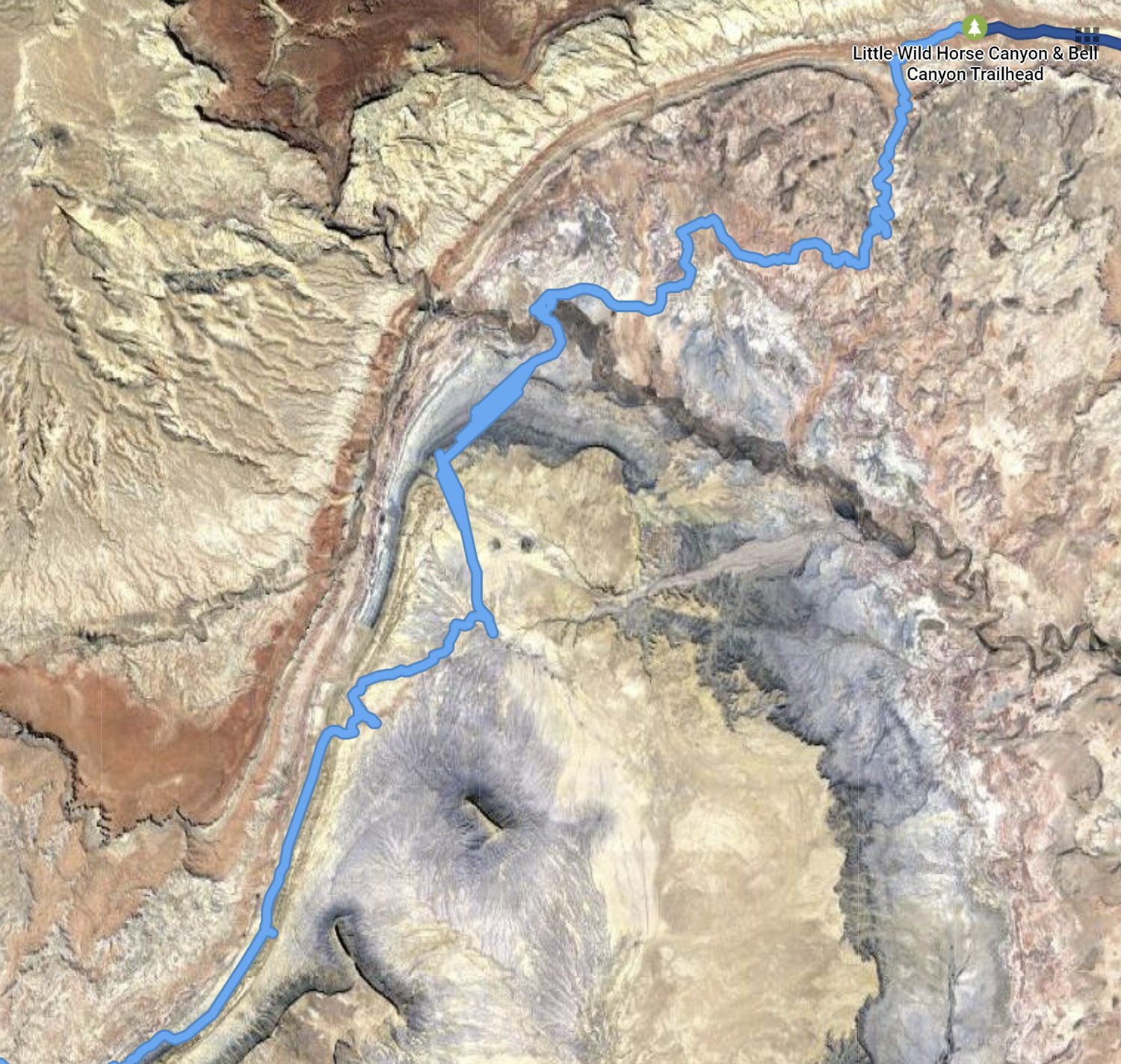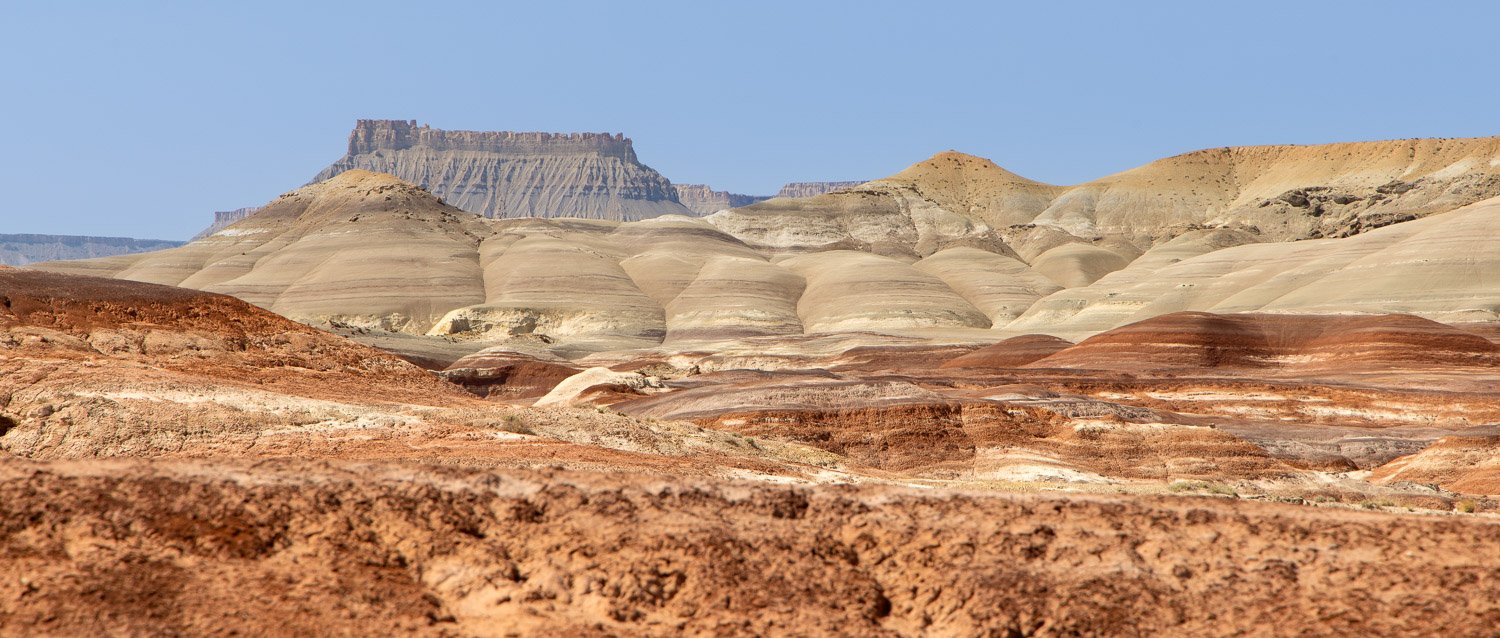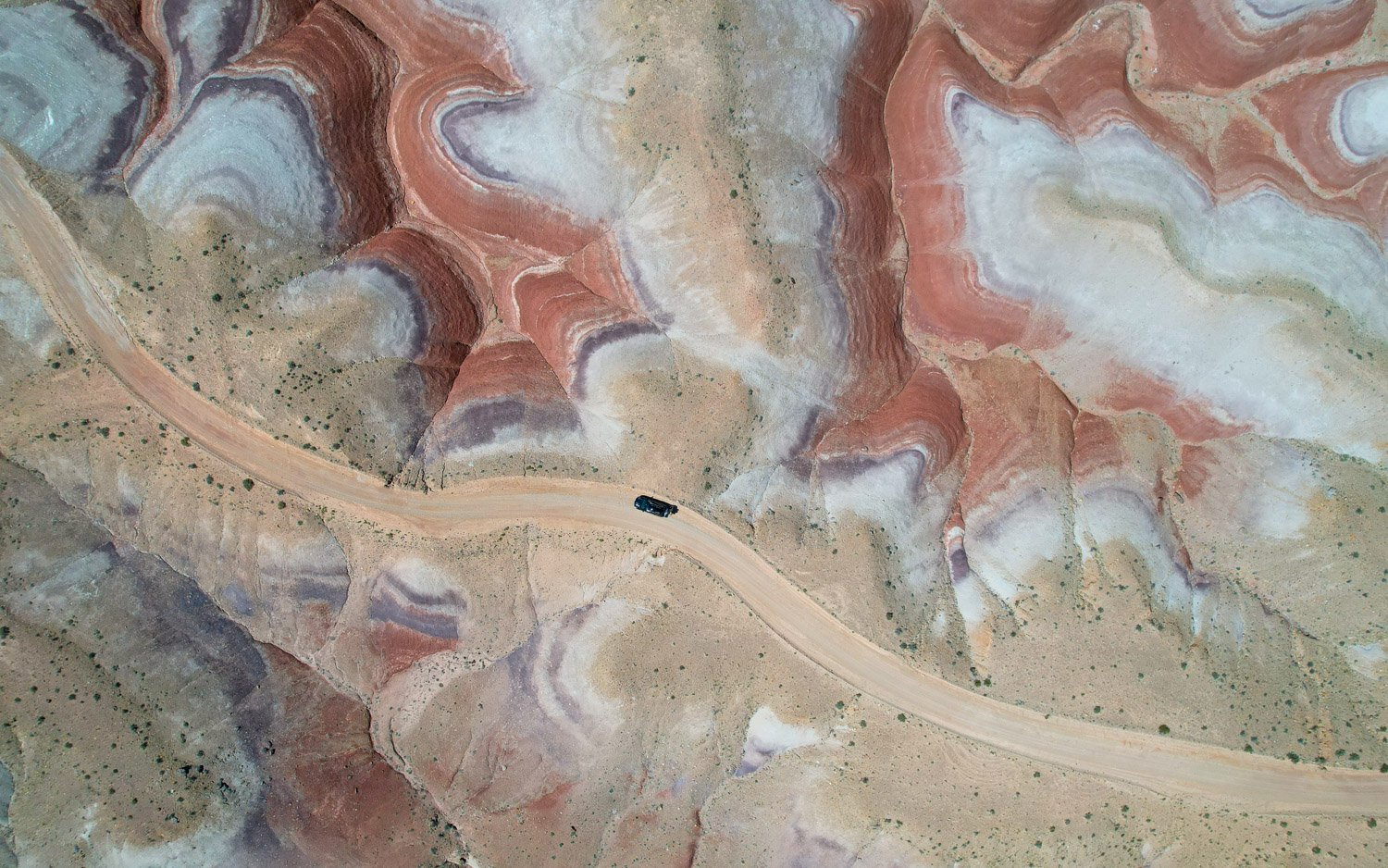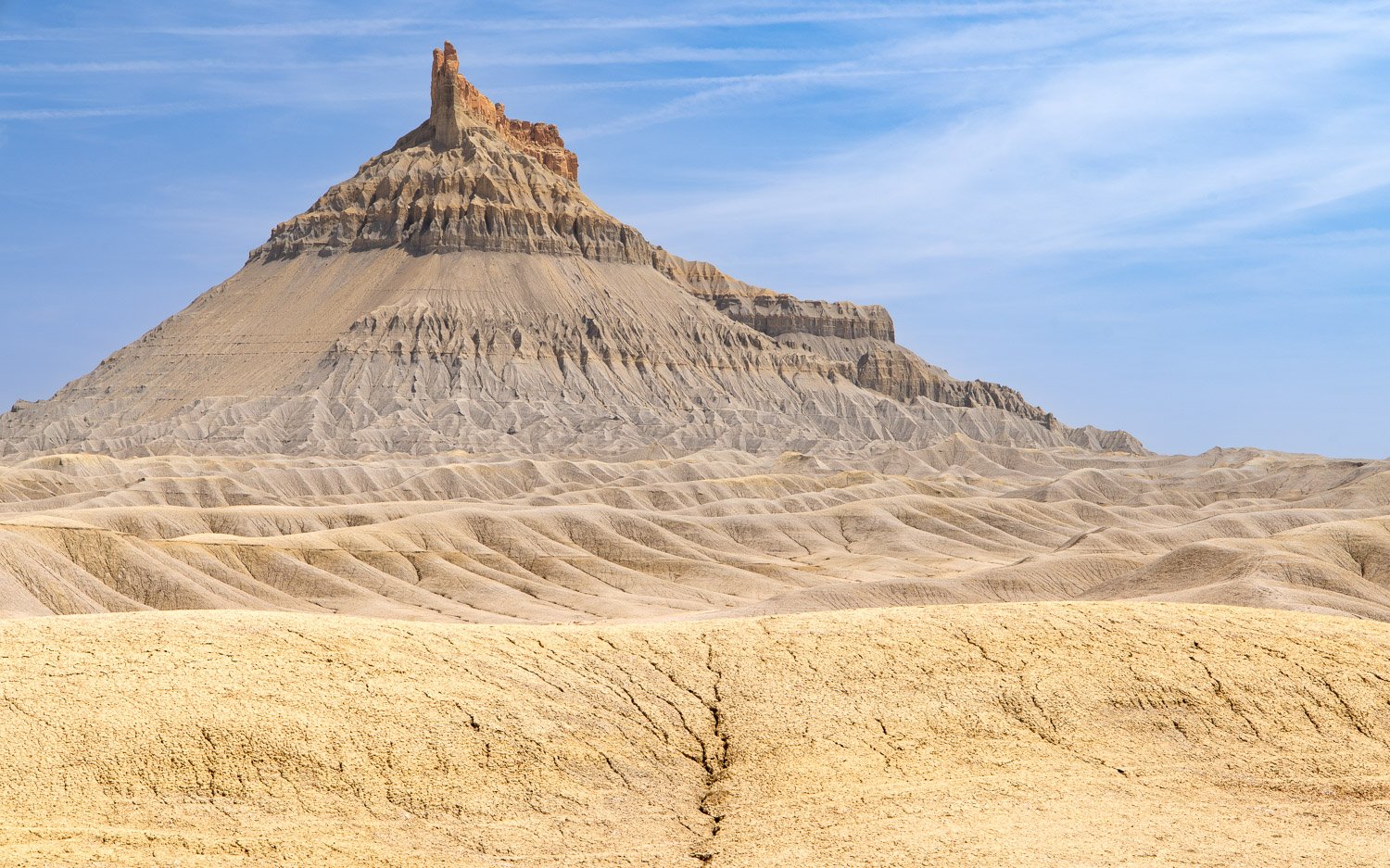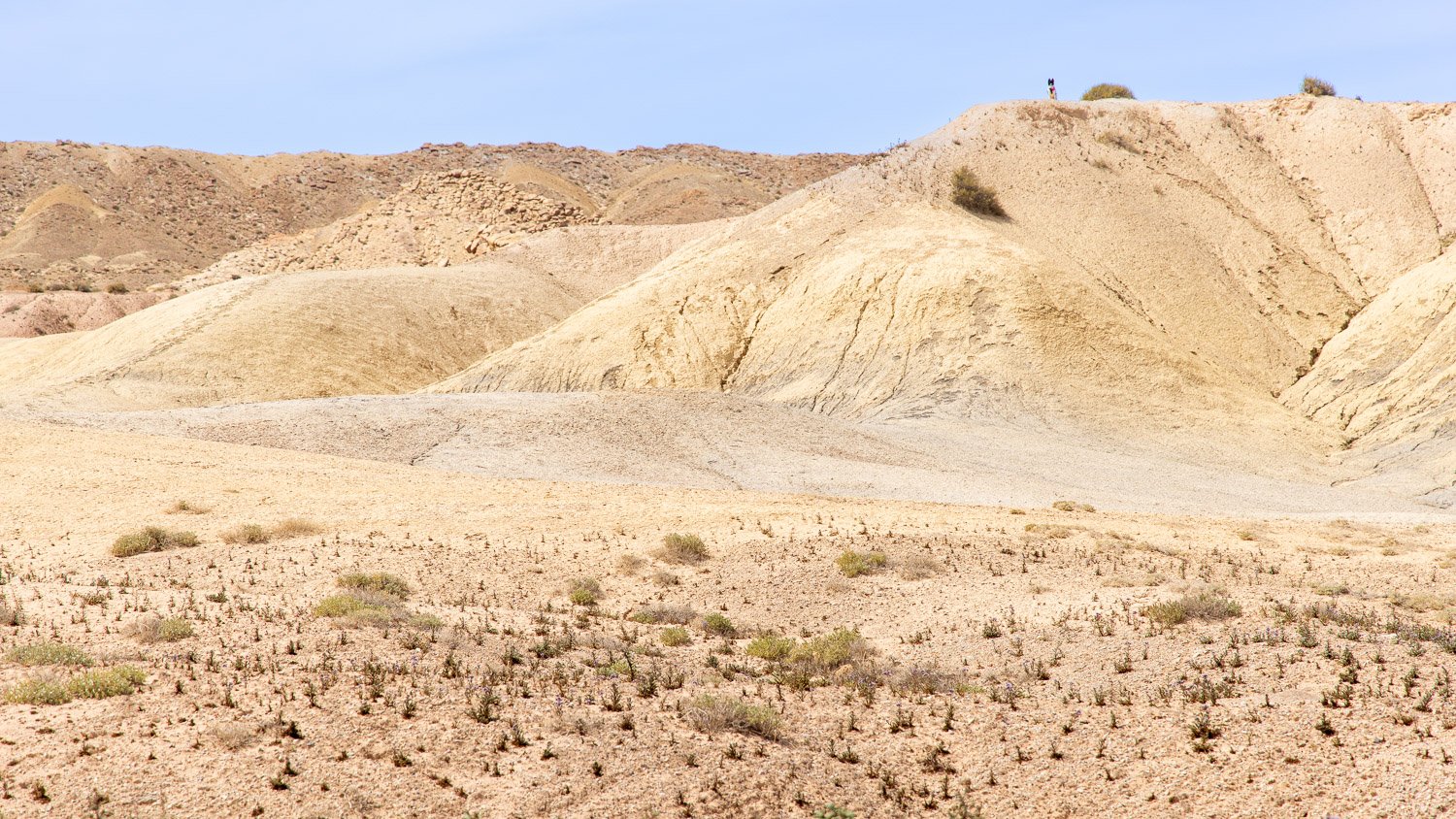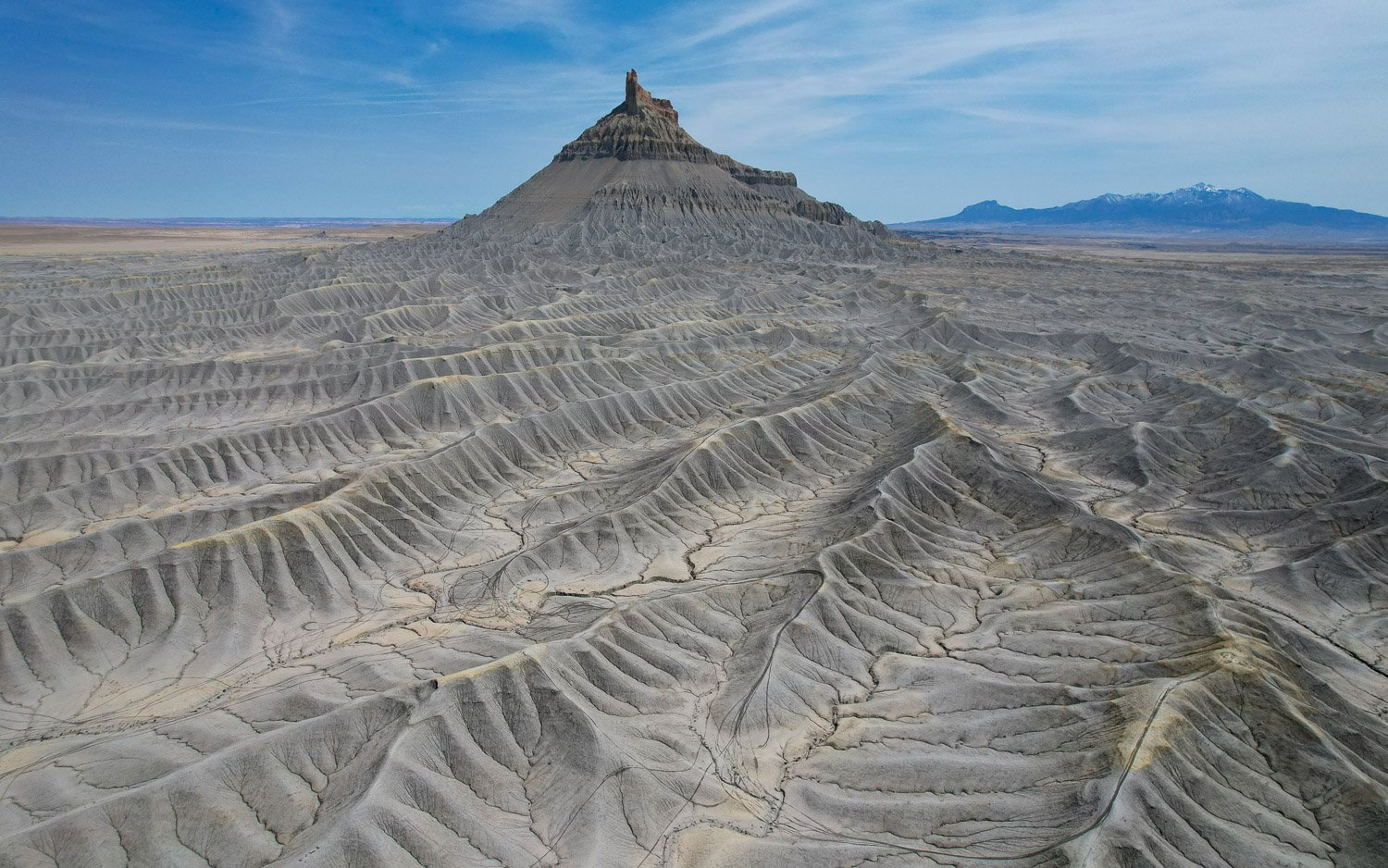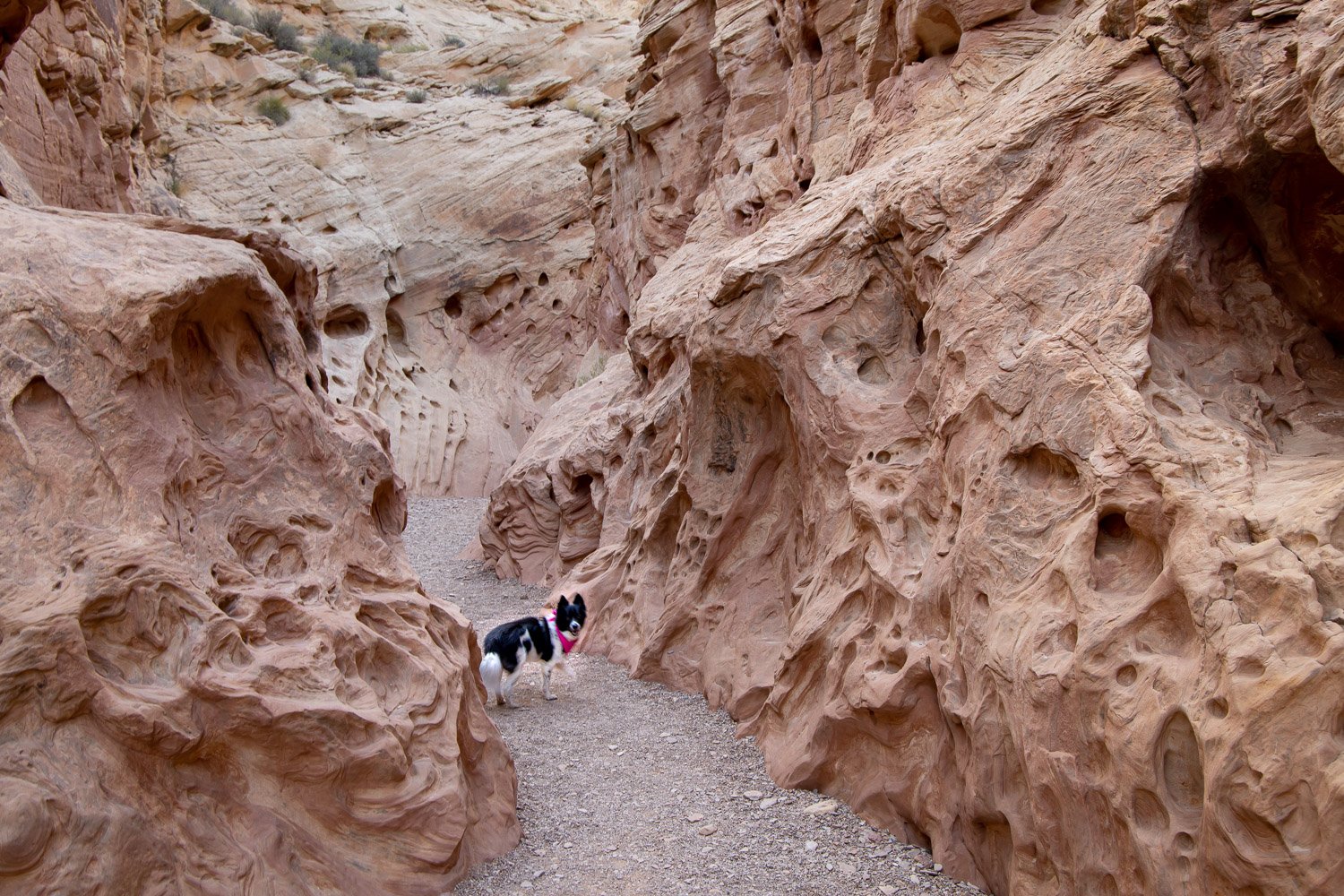In northwest New Mexico, adjacent to the Navajo Nation lies the Bisti Badlands in the De-Na-Zin wilderness. De-Na-Zin is the Navajo term for cranes. Few signs point to this remote area protected by the Bureau of Land Management, but after going through a fence near a parking lot, you hike across a featureless, barren plain with some red clay hills in the background.
No trails mark the way to the hoodoos, spires, capped rocks, petrified wood, and even features called alien eggs. After about a mile, you walk through some of the red hills and the dark lines of coal seams.
Soon, the odd, eroded features seem to grow out of the land.
Often the hoodoos and other features are formed when a harder rock erodes slower than the sandstone below.
Chance thought they were made for dramatic poses.
And one might’ve even been a dog itself.
One area was filled with groups of rounded, boulder-like rocks called alien eggs. Many look as if they’re ready to hatch what they’ve held for eons.
While the area now is barren, with only small bits of vegetation scattered about, there is evidence of the ancient forests that were once here. Many small bits of petrified wood are on the ground and occasionally long trucks lie on the ground.
After exploring around the badlands, it was time to head back around the red hills toward the car.
